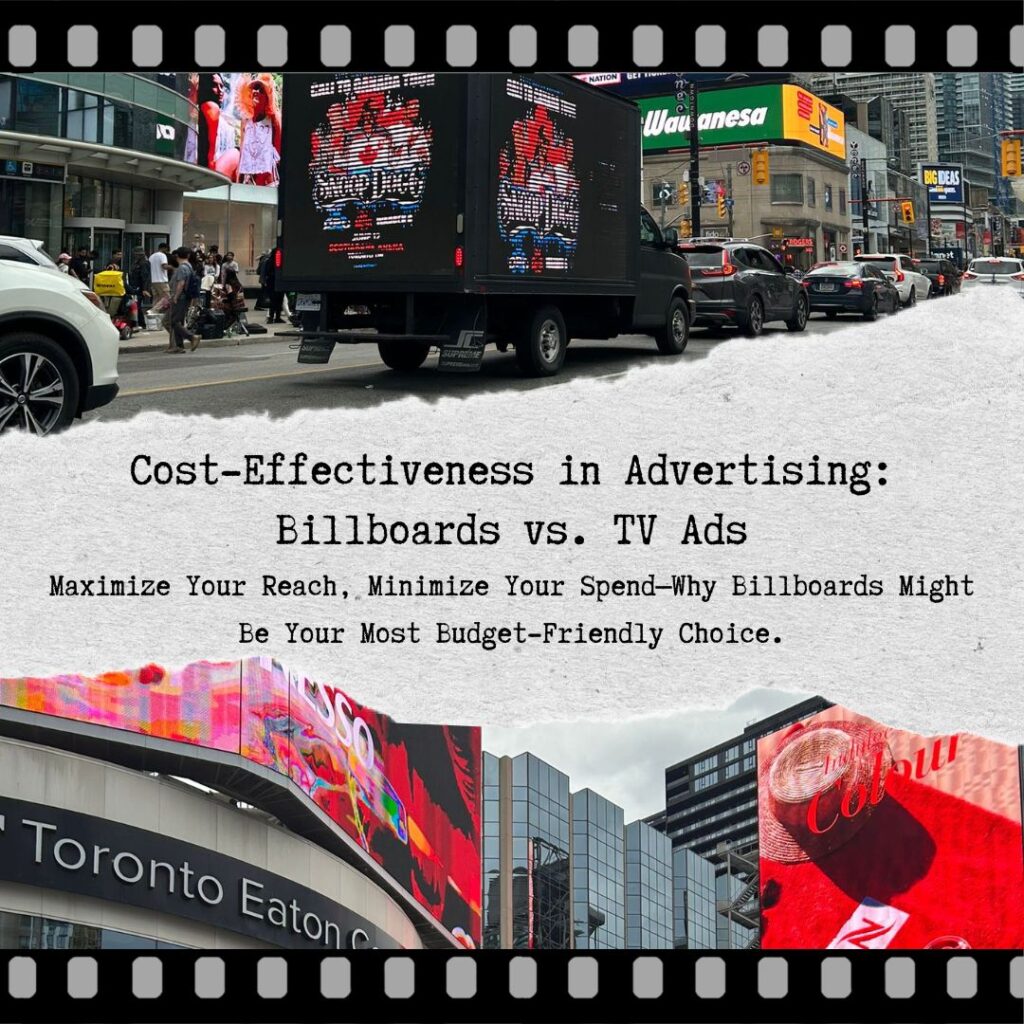
Maximize Reach, Minimize Spend: Billboards or TV?
Comparing the cost of billboards to TV ads involves considering various factors that contribute to the overall expense of each advertising medium. Here are some unique insights into the cost comparison between billboards and TV ads:
Reach and Frequency: TV ads typically offer broader reach and higher frequency compared to billboards. Television reaches a large and diverse audience, making it suitable for mass-market campaigns with wide-ranging target demographics. However, this extensive reach comes at a higher cost per impression compared to billboards, which may offer more targeted exposure to specific geographic areas or demographics.
Cost per Thousand (CPM): CPM is a common metric used to compare the cost-effectiveness of different advertising mediums. While TV ads may have a lower CPM compared to billboards in terms of cost per thousand viewers reached, billboards can offer competitive CPM rates when targeting specific local markets or niche audiences. Additionally, billboards provide continuous visibility over time, potentially resulting in a lower overall CPM compared to TV ads, which are fleeting and consumed in a single viewing.
Production Costs: The production costs associated with creating TV ads can be significantly higher than those for billboards. TV ads require professional video production, including scripting, filming, editing, and post-production, which can incur substantial expenses. In contrast, billboard ads may involve lower production costs for graphic design, printing, and installation, especially for static billboards.
Ad Placement and Duration: The cost of TV ads varies depending on factors such as the time of day, day of the week, program genre, and network popularity. Prime-time slots and nationally broadcast programs command higher advertising rates compared to off-peak hours or local cable channels. In contrast, billboard advertising rates are influenced by factors such as location, visibility, traffic volume, and duration of the campaign. While prime locations and longer campaign durations may incur higher costs, billboards offer flexibility in targeting specific geographic areas or local markets.
Measurability and Accountability: TV ads provide more advanced metrics and analytics for tracking audience engagement and campaign performance compared to billboards. Digital TV platforms offer precise targeting, real-time data analysis, and attribution modeling, allowing advertisers to measure the effectiveness of their ads and optimize their strategies accordingly. While billboards offer less granular metrics, advancements in technology have improved the measurability of outdoor advertising through methods such as traffic counts, mobile device tracking, and audience surveys. Overall, the cost comparison between billboards and TV ads depends on factors such as reach, frequency, production costs, ad placement, duration, and measurability. Advertisers should carefully evaluate their marketing objectives, target audience, and budget constraints to determine the most cost-effective advertising mix for achieving their goals.

